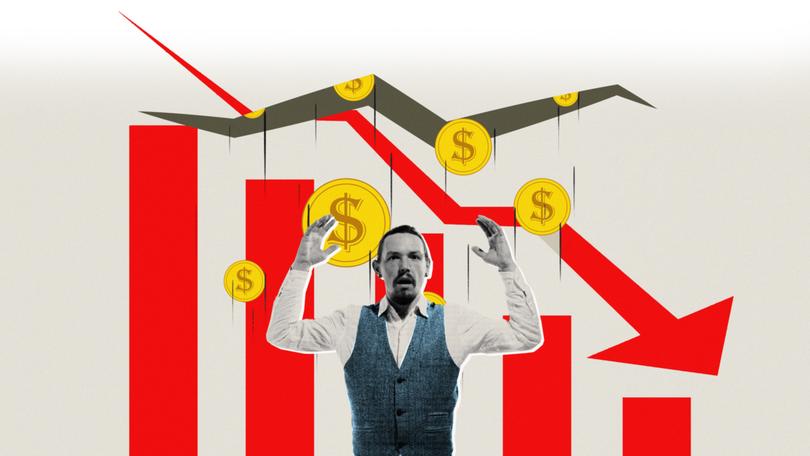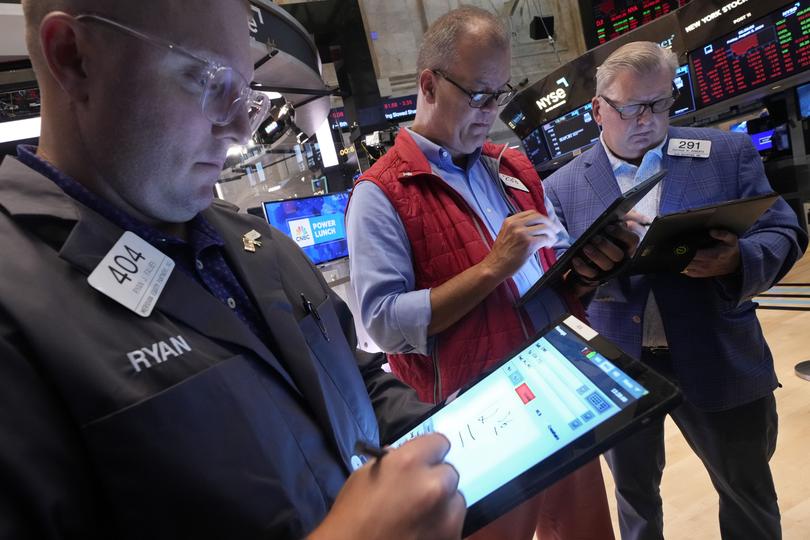The Economist: Why fear is sweeping financial markets across the globe

How quickly the mood turns. Barely a fortnight ago stockmarkets were on a seemingly unstoppable bull run, after months of hitting new all-time highs. Now they are in free fall.
America’s Nasdaq 100 index, dominated by the tech giants that were at the heart of the boom, has fallen by more than 10 per cent since a peak in mid-July. Japan’s benchmark Topix index has clocked losses well into the double digits, dropping by 6 per cent on August 2 alone — its worst day since 2016 and, following a 3 per cent decline on August 1, its worst two-day streak since 2011.
Share prices elsewhere have not been bludgeoned quite so badly, but panic is sweeping through markets. Wall Street’s “fear gauge”, the VIX index, which measures expected volatility through the prices traders pay to protect themselves from it, has rocketed to its highest since America’s regional-banking crisis last year.
Sign up to The Nightly's newsletters.
Get the first look at the digital newspaper, curated daily stories and breaking headlines delivered to your inbox.
By continuing you agree to our Terms and Privacy Policy.Look beneath the surface, at individual sectors and firms, and the mood is even wilder. The Philadelphia semiconductor index, which tracks companies in the chipmaking supply chain globally, has fallen by more than a fifth in a matter of weeks. Arm, one such firm, has lost 40 per cent of its market value. The share price of Nvidia, the previous bull run’s darling, has been flailing. In the three days from July 30th it dropped by 7 per cent, soared by 13 per cent, then dropped by 7 per cent again. On August 2 the value of Intel, another chipmaker, plunged by more than a quarter. And it is not just the semiconductor industry. The KBW index of American banking stocks has fallen by 8 per cent in a matter of days. The prices of Japanese bank shares have plummeted, too.
The things that are—or, at least, were—doing well are the boltholes investors dash to when terrified: gold, the Japanese yen and American Treasuries. Troublingly, though, even the gold price cratered on August 2, with a peak-to-trough drop of more than 2 per cent. Gold is usually a hedge against exactly the sort of chaos in the air just now. That its price was driven down suggests investors may have been selling not because they wanted to, but because they had to raise cash quickly to meet margin calls elsewhere. If so, there is a risk that other fire sales and a self-reinforcing doom loop may follow.
Three developments have combined to tip investors over the edge. The first is a dawning realisation that artificial intelligence (AI), and especially the chipmaking industry that powers it, has been imbued with unrealistically high hopes. The biggest swings in American share prices came during a ten-day period in which five tech giants — Alphabet, Amazon, Apple, Meta and Microsoft — released results that left their shareholders crestfallen. Even Alphabet and Microsoft, whose revenues beat analysts’ expectations, saw their share prices fall the day after they reported. Those of Amazon, which undershot such expectations, were punished far more. The across-the-board battering suggests investors’ former euphoria over all things AI is evaporating.
That has an immediate knock-on effect for chipmakers which, if AI investment retrenches, may not be facing limitless demand for their products after all. In fact, recent weeks have given such firms far more to fear than a mere change in animal spirits. On July 17 Donald Trump sent semiconductor stocks into a tailspin by suggesting Taiwan should pay for its own defence against China. TSMC, which makes the vast majority of the world’s most advanced chips, is based in Taiwan and so would be vulnerable to a Chinese invasion. The Biden administration is also planning new curbs on exports of chipmaking equipment to China. With the twin threats of faltering demand and worsening geopolitics, it is little wonder that chip stocks are plunging.
As tech firms have stumbled, so has America’s economy — the second development to give investors an attack of the vapours. Until recently “bad news is good news” was the mantra of the market. Any hint of slowing growth or a weaker labour market was good for asset prices, since it meant inflation was likely to stay quiescent and allow the Federal Reserve to cut interest rates more swiftly. But by the time America’s jobs report was released on August 2, the mood had shifted: bad news is now bad news.

The report revealed that the unemployment rate rose to a three-year high of 4.3 per cent in July, while the economy added just 114,000 jobs, against a consensus forecast beforehand of 175,000. In other words, the risk of a recession that many thought had been avoided has just risen.
Accordingly, traders began placing bets that the Fed would cut rates by half a percentage point at the central bank’s next meeting in September, to stave off such a slowdown. That is despite Jerome Powell, the Fed’s chairman, having dismissed the suggestion that rate-setters were considering such a move at the last meeting only days ago. Treasury yields plummeted, with the two-year rate falling to 3.9 per cent, more than a percentage point below its level at the end of April. Weeks ago such a reduction in borrowing costs might have boosted stocks. Now investors seem to fear the downside of slowing growth, and its implications for company earnings, more than they long for cheaper money.
The third force roiling markets is the strength of the Japanese yen. In recent weeks it has strengthened against a trade-weighted basket of currencies at close to its fastest pace in two decades. In part, this is because of the Bank of Japan’s surprise decision to raise interest rates by a tenth of a percentage point on July 31. A rising yen automatically depresses Japanese share prices, as many of the country’s largest globetrotting firms, such as Hitachi, Sony and Toyota, make their earnings overseas in foreign currencies.
Some of the decline in Japanese stocks may be explained by this effect. Probably more important, though, is the unwinding of popular trades linked to a weak yen and ultra-doveish monetary policy. The combination of the two made it possible to borrow cheaply in yen, convert the proceeds to dollars and invest in Treasuries, yielding far more than it cost to service the debt — a “carry trade”.
But with Japanese interest rates rising and American ones falling, the trade has fading attraction. Worse, the yen’s rapid strengthening raises the dollar cost of paying back the debt, pushing the trade into the red. The violent moves of the past few weeks will have forced many investors to close their positions, and possibly also to fire-sell other assets, adding to instability in both domestic and global stocks.
As ever at the end of a turbulent week, the first question now is whether — somewhere amid the chaos — an asset’s price has swung sharply enough to imperil an outfit that is heavily exposed to it. On that front, the decline in the gold price, and those of bank stocks, is ominous. The other, linked question is whether next week will be better or worse. Assuming no big investor decides it is time for a sell-off that will be up to the collective mood. Going on recent form, it isn’t good
